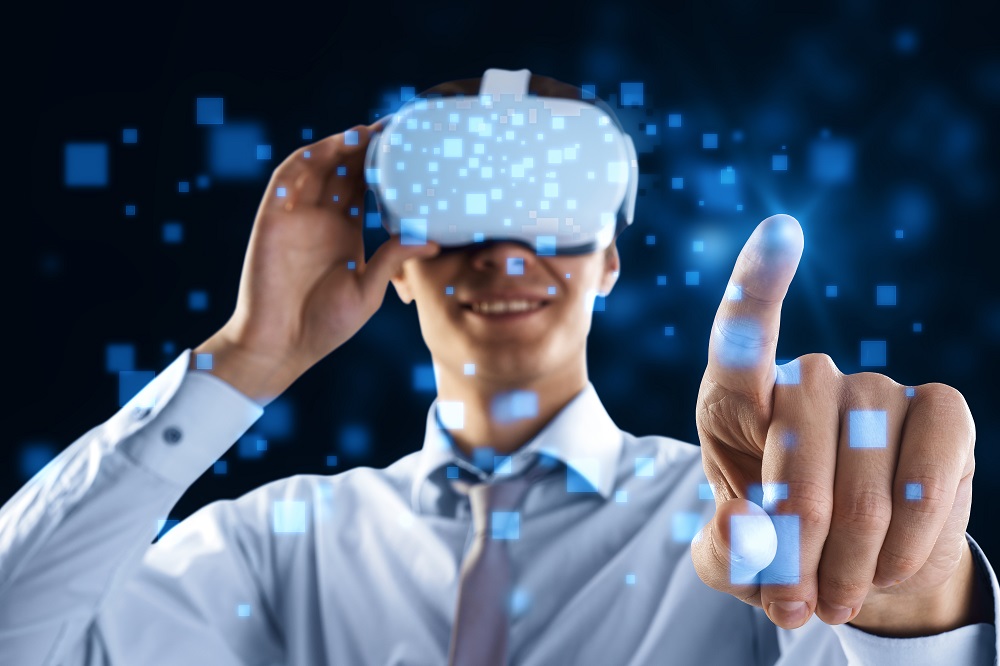Virtual Reality (VR) is a rising trend in marketing and sales strategies. Virtual reality in marketing can be used to emphasize the brands’ identity and improve the users experience. While previous VR applicatio ns have focused on the immediate tactics of making sales easier, VR can also be used to improve the status of the brand itself. Let’s see more in this article.
Virtual reality in marketing: this is how it works
Whatever approach you take, virtual reality in marketing opens new and cheaper ways of engaging customers and raising brand awareness. When used correctly across your entire marketing process, VR can be used to boost reach, and convert prospects to buying customers. Similar virtual experiences can be used to show products during Business-to-Business (B2B) marketing.
With VR, brands and advertisers can immerse their customers in a virtual world that they completely created.
Many famous brands have already created some sort of VR experience within their marketing communications so far. Top brands such as BMW, Audi, Porsche, KIA, Volkswagen, Lexus, Chevrolet, and Honda have all integrated VR and AR experiences into marketing strategies. Virtual and augmented reality technologies have already changed the marketing landscape.
Now you know augmented and virtual reality solutions have the potential to improve brand values and customer experiences, you are ready to integrate them accordingly in your marketing strategies.
In a competitive market, a VR campaign could be the difference-maker that allows the brand to differentiate itself from the competition, creating lasting discussions and brand recognition. Brands are integrating VR into their digital marketing strategies in order to give their audiences a sense of what they can expect from the products or services that they are buying.
Additionally, VR is also providing an innovative advantage in their marketing efforts. As a result, brands are investing in initiatives designed to integrate VR in their wider marketing strategies. More complex Virtual Reality marketing allows consumers to learn about products at a more personalized level, with hands-on experiences to understand how they function, fostering greater awareness among buyers and speeding up the purchase process.
Ways to integrate virtual reality in your marketing campaign
There are a lot of ways that an interactive element can be brought into Virtual Reality marketing, and the variety in experiences available is perhaps one of the strongest points in using VR as a medium for marketing, aside from the completely immersive nature of virtual reality.
Some of these activities include post-sales services, customer support, fulfilment, etc. VR solutions can be part of that plan of action, as it offers businesses a highly developed marketing channel which can easily differentiate your brand from competitors. More complex VR marketing allows consumers to learn about products at a more personal level and have hands-on experience with their functioning, thereby driving greater awareness among buyers and speeding up the purchase process.
There are plenty of companies that have already integrated virtual reality into their marketing campaigns. Undoubtedly, we are facing a new environment pending exploration that will surely offer us a wide range of possibilities. Here are the basic ways you can integrate it into your marketing campaign:
1) Testing the product before buying it
Customers love to try products before they buy. Virtual reality offers us a fantastic way to cut costs, as we don’t even have to invest in real products for customers to try. And it gives customers the advantage of not having to go out.
2) Augmented reality in the establishment
Augmented reality is actually another variant of the metaverse that combines virtual elements over a representation of physical reality. You can offer additional information about the product or service using virtual reality glasses. Similarly, augmented reality can be used to virtually place the product in the user’s home, such as decorative objects or furniture.
3) B2B presentations
With virtual reality we can improve Business to Business (B2B) sales by developing new presentation material or with a new dynamic sales concept. Virtual or augmented reality tools allow professionals to interact from anywhere while visualizing products in a much more detailed way.
What do you think?
Virtual reality marketing campaigns suggest the most effective strategies today are the ones that give consumers unique, personalized experiences.
Adding VR into your marketing strategy can help you produce more compelling content, engage customers in new ways, and increase your brands visibility.
Now you know that Virtual Reality solutions have the potential to improve brand value and the experience of customers, and that you are ready to integrate them accordingly in your marketing strategy. VR the latest marketing and sales trend, allows brands to provide customers with a unique experience, tapping their mobile devices.
If you want to dive deep into this new tech, in Stringnet we are experts.
Don’t hesitate to contact us and make the VR marketing campaign of your dreams come true with us.


